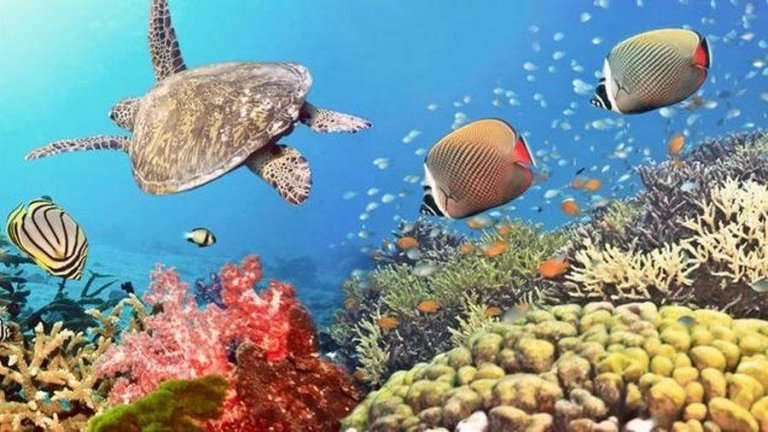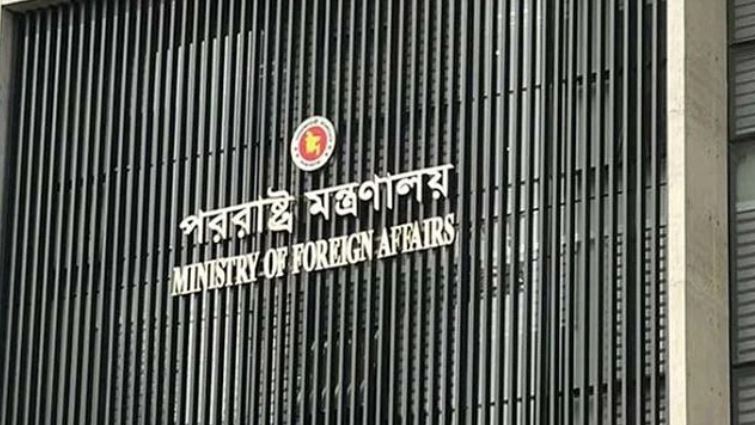- 50 fish species have become extinct
- For the rise in acidity, water-life making changes
- Coral in number still declining in St. Martin
- Coral area fall 70pc to 0.39sq km.
- Coral species reduce 56pc to 40.
- Tree-covered area fall 33pc to 3sq km
- Environmental Protection Act, 1995 ignored
The biodiversity of the Bay of Bengal in Bangladesh is under threat due to climate change. More than 50 species became extinct in the last few years. If the acidity in seawater increases with the current rate, the existence of many more species will be endangered further.
The amount of carbon dioxide in the atmosphere has increased by about 30 percent in the last one and half centuries. Every day, the oceans absorb 22 million tons of carbon dioxide from the atmosphere. The level of carbon concentration in the sea is now 380 ppm.
Rezaul Islam Bhuiyan, professor of the Department of Land and Environmental Sciences of the University of Dhaka said that the acidity of the sea is increasing at an abnormal rate, resulting in the biodiversity at sea is in crisis and the overall ecosystem is breaking down. The Bay of Bengal is not free from the dangers. Due to the increase in acidity, the rot has taken place in the Bay of Bengal. The process of life is changing.
He said, St. Martin, the only coral island in the Bay of Bengal, has 19 species of fossils, 36 species of hard, and 13 species of soft coral. There are 191 species of snails and oysters. In addition to 10 species of crabs, there are 153 species of algae. There are 134 species of fish. Of these, at least 50 species have become extinct in the last few years. As the acid increases, the new species will be endangered more and more.
Meanwhile, after the tsunami, massive volcanic eruptions were seen at the bottom of the Indian Ocean. Dilip Dutt, professor of the Department of Land and Environmental Sciences at the University of Khulna said, the Bay of Bengal is also in danger of such an explosion. And if there is such an explosion in the Bay of Bengal, the biodiversity can completely be destroyed.
On the other hand, coral is declining day by day in St. Martin, the only coral island in the country. The tree-covered area of the island is also declining. In contrast, the number of tourists is increasing. New hotels and infrastructure are being built for their accommodation.
The island's permanent residential population is also increasing, which is putting pressure on the island’s biodiversity. The unique natural features of St. Martin are ruining as a whole.
A recent study of the University of Dhaka revealed this gloomy plight of St. Martin. To give an example, not even one-third of the land of the island was covered with coral four decades ago. Coral, a type of invertebrate marine animal made up of a number of tiny creatures called polyps, is often mistaken as a stone for its hardness of the outer covering.
Yusuf Ghazi, one of the researchers of the study said, "If the necessary measures are not taken, St. Martin's Island will completely be coral-free by 2045. Coral can only be found in museums.”
St. Martin, a 13 square kilometer island in the sea and a union territory of nine villages at Teknaf Upazila in Cox's Bazar, is 120 km from the town.
Nur Ahmed, chairman of St. Martin's Union Parishad (UP), told the Bangladesh News that there had been erosion around the island decreasing over the years due to erosion. To protect the island, dams need to be built quickly based on expert advice. He said there is no government initiative to protect the corals and algae of the island. They are working to stop coral extraction and smuggling locally for two years, no government allocation and measure is there to remove the wastages left by the tourists. These wastages constantly fall into the sea.
Every year from September-October to March-April, tourists visit the island. According to the study, over 3 lakh tourists now visit the island, which was less than 200 during 1996-1997. The population in the island during the period rose to 10,000 in 2100 from 3,600. To accommodate the increased number of visitors, a total of 124 hotels, motels, and cottages have been set up while in 2012, the number of hotels in St. Martin was only 16. During the tourist season, an additional three thousand people stay in St. Martin for a few months.
Analyzing the images from satellites, it was seen that in 36 years, the coral cover on the island has decreased from 1.32 sq km to 0.39 sq km. The number of coral species has come down from 141 to 40. The tree-covered area has been reduced from 4.5 sq km to 3 sq km.
Humayun Akhtar, professor of, Department of Geology, University of Dhaka said in the first light that St. Martin's Island is unique in the world in terms of biodiversity. Corals are born there because of the clear water. The water has been polluted by the indiscriminate movement of tourists. Considering St. Martin as a national treasure, initiatives need to be taken to preserve it.
To protect coastal and wetland biodiversity, the Department of the Environment declared Teknaf Beach in Cox's Bazar and St. Martin's Island an Environmentally Critical Area (ECA) in 1995. According to the Environmental Protection Act, 1995 (Gazette 1999), the collection and sale of corals, algae, snails, and oysters has been completely banned in the affected areas. Any kind of work that is harmful to fish, turtles, and other aquatic animals is prohibited; Extraction of rock and coral rock, use of rock and coral in any construction work. Violation of this order is punishable by a maximum of two-year imprisonment and a maximum fine of two lakh taka. Still, no one is paying attention to these laws.
Abdul Jalil, a fisherman, said that in the past, fish could be found in the seas. He said, “Not only fish but also snails are starting to lose their vitality. Snails, oysters, crabs, and other species of animals were found in the fishing nets. Now their species can no longer be seen.”
According to a study by ‘Works for Botor World’, a voluntary organization working in the Bay of Bengal, the number of aquatic animals living in the Bay is declining at an alarming rate.
The study found that St. Martin's Island has 30 species of corals, 150 species of fish, 5 species of rare turtles, 15 species of snakes, 300 species of snails and oysters, 200 species of birds (both domestic and migratory), 5 species of amphibians, 5 species of lizards, 20 species of mammals.
There are invertebrates including sponges, shill crabs, monkey shill crabs, lobsters, etc. Fish include fairy fish, butterflyfish, bowl coral, red koi, needlefish, redfish, flying fish, etc. The place is known for laying eggs of sea turtles (green and olive turtle species). For these reasons, St. Martin's Island has been called one of the rarest places in the world. Especially in other places of small size, such landscapes and abundant species of plants or animals are not found.
But many species of aquatic animals have become extinct in the last few decades. As the balance of the natural environment is being disturbed, new species will soon become extinct.
Mahmudunnabi Chanchal, general secretary of the organization, said, “The acidity in the seawater is increasing. People are also destroying the biodiversity of the sea in various ways. Just looking at St. Martin, we can understand how people are upsetting the balance of the natural environment. The island is being persecuted beyond its tolerance. Coral is being destroyed. The biodiversity of the region largely depends on the formation of the coral island. So the marine biodiversity is losing its balance as St. Martin's natural landscape is lost.”
Tags :













0 Comments